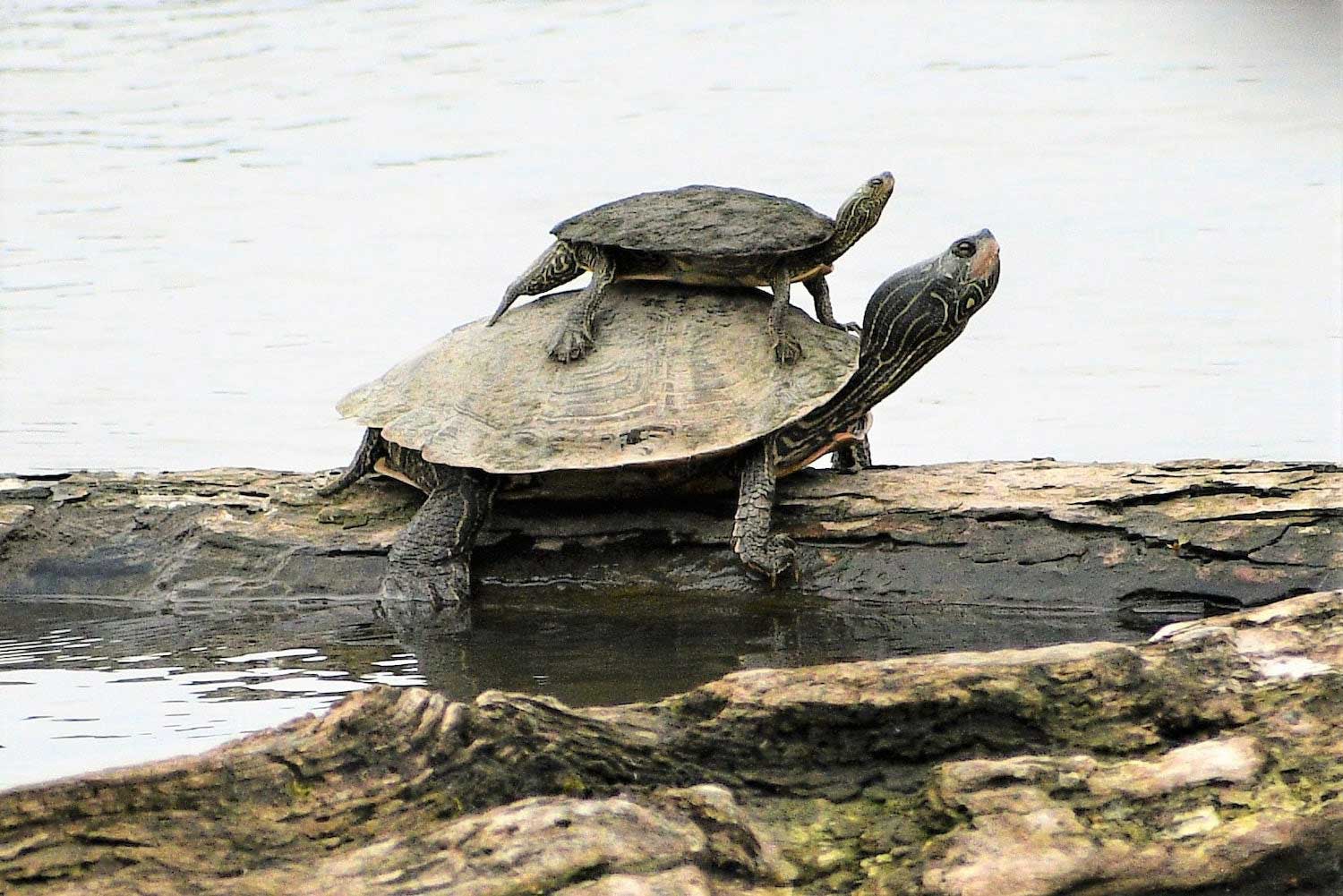In early spring, wetlands are abuzz with seasonal activity

Before the grass greens up and the trees leaf out in spring, our wetlands come alive with new activity after the long, quiet winter. Long before our forests provide shade on a sunny day and our prairies turn into a colorful backdrop, our wetlands start to hum again with signs of the new season.
Some of these seasonal changes start even before spring officially arrives. In late February and early March, you might find turtles and maybe even snakes basking on sun-warmed rocks, logs and pavement on warm, sunny days, trying to warm up after the cold winter. Birds will begin to perch on grasses at the water's edge. Soon after, frogs will make their presence known – first chorus frogs singing their familiar tune and then others hopping into the water as you approach.
The wetlands are one of the first things we notice awakening in spring because they are among our most diverse habitats. They are full of aquatic plants and surrounded by even more vegetation, and they are home to and support all manner of animal species, from our tiniest insects to our largest mammals, according to the Pennsylvania Department of Conservation and Natural Resources. All that diversity of species has the wetlands abuzz before we begin to notice spring in other habitats.
Supporting life in all forms isn't the only role our wetlands play in the ecosystem. When spring showers come — and keep coming — the wetlands play a key role in flood prevention. Wetlands are critical because of their ability to hold water, according to the Illinois Department of Natural Resources. After torrential rains, they reduce flooding by storing and slowing down the force of the rainwater. Conversely, during dry periods, they release stored water back into the streams that feed them.
Where does the water in our wetlands come from? Besides the precipitation that wetlands hold, most are wet because water from an aquifer or spring seeps up to the surface, National Geographic reports. Lakes and rivers can also feed wetlands, and even the oceans create wetlands, particularly in areas that regularly experience strong tides.
As important as our wetlands are, they are only a sliver of what they once were. Since 1818, Illinois has lost about 90% of its wetlands, IDNR reports. Today, about 870,000 acres of wetlands remain in Illinois of the original 8.2 million acres. The loss of wetlands continues today, with between 3,000 and 5,000 acres of this critical habitat lost each year.
Many types of wetlands exist, including swamps, marshes, bogs, fens, wet meadows and forested wetlands. They are commonly found near rivers and lakes. In Illinois, bogs, fens, marshes and wet meadows are most common in the northern part of the state, while swamps and forested wetlands are most prevalent in the southern part, IDNR reports.
Some wetlands are far from permanent, existing for just a few months or maybe even weeks, usually in the springtime. These vernal pools, or vernal ponds, can be teeming with life, providing critical habitat for some animals, in particular amphibians, which require water for part of their life cycle and also rely on wetlands for protection from predators.
Activity in the wetlands begins early in the season, but it will continue to increase as we move further into spring. Soon insects will join the other wildlife, and once nesting season begins for many of our local species we'll see another uptick in activity around these wildlife gathering spots.
Want to visit a wetland this spring to see all the activity for yourself? Many of the Will County forest preserves include wetland habitats. Some good choices for a spring visit include Braidwood Dunes and Savanna Nature Preserve, Goodenow Grove Nature Preserve, Lockport Prairie Nature Preserve, Lower Rock Run Preserve, Messenger Marsh, Rock Run Preserve, Theodore Marsh and Thorn Creek Woods Nature Preserve.
